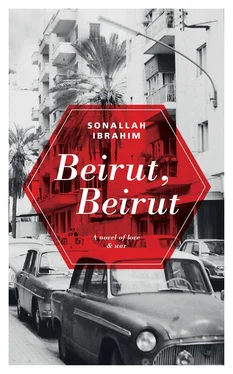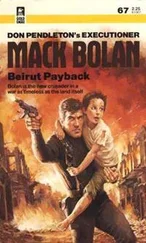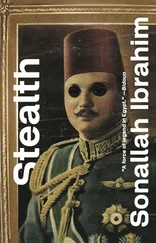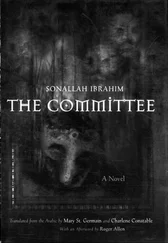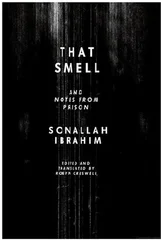Hamra Street:Name of a popular commercial street in West Beirut, known for its restaurants and cafés. Also refers to the surrounding neighborhood.
hatta :A checkered Palestinian scarf (usually red or black against a white background). Can be worn on the head or around the neck. Partly because Yasser Arafat was rarely seen without it, it became associated with the Palestinian resistance movement.
Imam Musa al-Sadr (1928–78):Born in Qom, Iran. Radical religious leader of Lebanon’s downtrodden Shii community. In 1973, he founded the Movement of the Dispossessed, which claimed to represent all the underprivileged of Lebanon, not just Shiis.
Iyad, Abu:The name most commonly used by Salah Khalaf (1936–91), Fatah’s second-in-command and head of its intelligence wing.
Jumblatt, Kamal (1917–77):Radical Druze leader who founded the leftist Progressive Socialist Party. A fervent Arab nationalist, he was a vocal leader of the Muslim/leftist front during the civil war.
Karami, Rashid (1921–87):Sunni Lebanese political leader from Tripoli who served as prime minister several times from the 1950s until his assassination in 1987.
lebneh :A tangy yogurt cheese eaten as an appetizer or spread.
Maronites:A Lebanese Christian sect in communion with the Roman Catholic Church. The “informal agreement” that has organized Lebanese politics since the country’s independence guarantees that the president of Lebanon is always a Maronite.
Martyrs’ Square:A well-known square in central Beirut, Sahat al-Shohada, named for sixteen Arab nationalists hanged there by Ottoman authorities during World War One.
Maslakh-Karantina (the “Slaughterhouse-Quarantine” district):Adjoining urban neighborhoods in East Beirut near the port that by the 1970s had become overcrowded slums. Populated mainly by poor Shiis, Kurds, Armenians and Palestinians, it was controlled by the PLO. Most notorious as the site of a massacre of its inhabitants committed on January 18, 1976 by Christian militias as part of their drive to consolidate control over East Beirut.
Mourabitoun (‘‘the Sentinels’’):A Nasserist organization founded in the 1950s, which was revived during the lead-up to the civil war and which allied with other leftist militias in West Beirut.
Movement of the Dispossessed: See Amal militia.
Nasser, Gamal Abdel (1918–70):Fiery, charismatic president of the Republic of Egypt from 1954 until his death in 1970. As the foremost champion of Arab nationalism and a vocal proponent of Arab unity, Nasser was an inspiring political leader for a generation of Arabs in newly independent nations of the Arab world in the 1950s and 1960s. He enacted sweeping nationalization programs and ran a repressive regime domestically.
Phalangist Party:A right-wing Christian party (and militia) founded in 1937 by Pierre Gemayel. Dominated by the Gemayel clan, the Phalangists became a major force on the Christian side during the civil war, and strenuously opposed the Palestinian presence in Lebanon.
Popular Front for the Liberation of Palestine (PFLP):Soviet-backed Marxist — Leninist Palestinian resistance group founded and led by George Habash. At the time, the second largest organization in the PLO after Fatah.
Ravagers: An Israeli term for Palestinian militants.
Saad, Maaruf (1910–1975):A popular Sunni politician from Sidon who was allied with the Lebanese left and with Nasserism. He championed local opposition to the monopolistic privileges granted to Camille Chamoun’s Protein Company. In late February 1975, he was shot — possibly by a Lebanese Army sniper — during a protest and died a few weeks later. His death became a rallying cry for the Lebanese left and Palestinians opposed to the Lebanese government, and was one of the triggers for the outbreak of civil war that spring.
Sahat al-Burj Square:Sahat al-Burj, meaning “Tower Square”, was a central square named for its clock-tower. It was later renamed Martyrs’ Square, but the neighborhood around it was notorious for brothels.
Sa’iqa:A Palestinian militia led by Zuhayr Muhsin formed and controlled by Syria’s Baathist regime.
Salam, Sa’ib (1905–2000):Sunni Lebanese political leader who served as prime minister several times from the 1950s to 1972. During the civil war, he was a major ally of the Saudis in Lebanon.
Sentinels: See Mourabitoun.
Syrian Social Nationalist Party (SSNP):A proto-fascist political party founded in 1932 explicitly modeled on European fascist groups, and promoting a national identity encompassing much of the territory historically known as Syria.
tarbush:The fez. Round red cap with a flat top commonly worn by men in the Middle East in the nineteenth and early twentieth centuries.
Tigers:Short for “Tigers of the Liberals” ( Numur al-Ahrar ), they were a militia linked to the National Liberal Party, part of the rightist, Christian Lebanese National Forces coalition during the civil war.
zaatar :Arabic for ‘‘oregano’’. Also the name given to a spice mix used to flavor bread or olive oil.
Behind every book there are always other books, and people other than the author.
Whether through practical assistance or moral support, this book owes its existence to my wife, as well as Ra’uf Mas’ad, Mohi al-Labad and Muhammad Berrada.
As for the books, they are: Lebanon’s War , edited by Galal Mahmud and photographed by Abd al-Razzaq al-Said, who lost his life while doing his job following the Israeli destruction of West Beirut in 1982 (Dar al-Masarra, 1977); Diaries of the Lebanese War (Center for Planning Affiliated with the Palestinian Liberation Organization, 1977); The Lebanese Crisis , by a group of scholars (The Arab League Educational, Scientific and Cultural Organization, 1978); The Great Bloodletting of Lebanon , by Sami Mansur (Cairo Arab Center, 1981); Tell Zaatar (Palestinian Women’s Union, 1977); The Litani Operation , by Ashraf Elias Shufani ( Occupied Palestine magazine, 1978); The Tragedy of Lebanon , by Jonathan Randal (Hogarth Press, 1983); Autumn of Fury , by Muhammad Hasanayn Haykal (Beirut, 1983); The War and the Experience of the Lebanese National Movement, by Muhsin Ibrahim (Beirut al-Masaa, 1983); articles by Bakr al-Sharqawi in the magazine Ruz al-Yusuf , 1976, and articles by ’Isam Sharih in the magazine al-Duha , 1982; Capucci , by Haydar Haydar (Ibn Rushd, 1978); Good Morning, Nation! by Ra’uf Mas’ad (Matbu’at al-Qahira, 1983); People Under Siege , by Mahjub Umar (Dar al-Arabi, 1983); Pages from the Boy’s Workbook , by Hani Fahas (Dar al-Kalima, 1979); Beirut’s Nightmares , by Ghada Samman; Zahra’s Story , by Hanan al-Shaykh; Little Mountain , by Elias Khoury; and “Beirut — Up From the Rubble,” by William S. Ellis with photographs by Steve McCurry, National Geographic , February, 1983.
And thanks to my friends who were kind enough to read the manuscript and offer their opinions on it: Saad al-Din Hasan, Ghanim Bibi, Nadia Muhammad Yusuf, Yusra Nasrallah, as well as others whom circumstances do not allow me to name.
Sonallah Ibrahim, December 1983
Читать дальше
